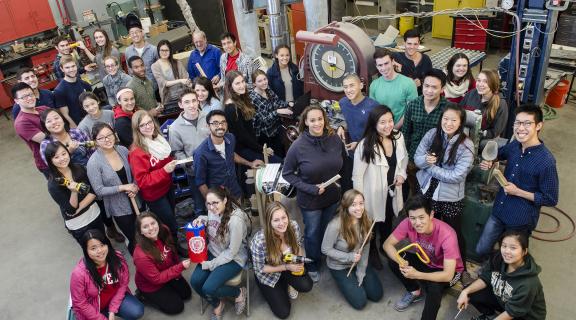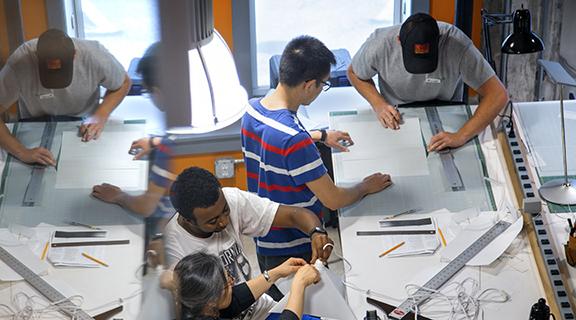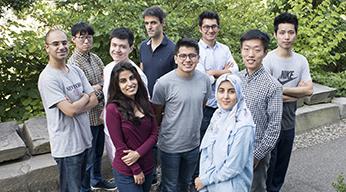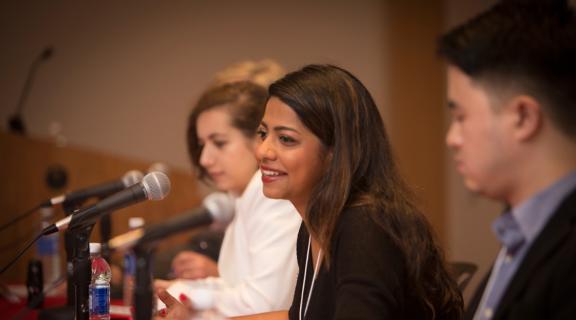
Admissions
Why Cornell Engineering?
"Scientists study the world as it is; engineers create the world that never has been."—Theodore von Karman
Cornell engineers challenge the status quo and do great things. Steeped in an environment of questioning, and with a focus on innovation, Cornell Engineering pursues excellence in all areas. Its faculty, students, and alumni design, build, and test products, improve the world of medicine, inform and shape our laws, create and drive businesses, become research luminaries, and overcome real and perceived barriers to achieve scientific breakthroughs that advance the quality of life on our planet.
We invite you to learn more about Cornell Engineering and its programs.
Did you know?
In 2009, Eureqa, a mathematical program that distills scientific laws from raw data, was developed and made freely available to researchers. Created by Cornell's Creative Machines Lab, the program was based on faculty member Hod Lipson’s work on robots that can independently repair themselves. The program evaluates a large amount of data in the search of mathematical formulas and relationships.
In 1955, Hugh DeHaven, of the Cornell Aeronautical Laboratory invented the three-point seat belt which has saved millions of lives. His research into crash survival pioneered safety studies and helped shaped the modern automobile industry. "...people knew more about protecting eggs in transit than they did about protecting human heads,” he wrote.
In 2004, the first patients received the fully implantable artificial heart developed by David M. Lederman (Applied and Engineering Physics, B.S., 1966, M.S. 1967 Aerospace, Ph.D. 1973 Aerospace). At the time it was the most sophisticated device ever implanted in a human and paved the way for further development of completely self-contained artificial heart technology.
Charles Frederick Hartt, Cornell’s first professor of geology, in the 1870s led two geological surveys of Brazil with Cornell geology students and faculty. He brought back geological and paleontological samples for the University’s burgeoning collections and botanical specimens for Wiegand Herbarium.
William Durand, a mechanical engineering professor from 1891 to 1904, was instrumental in forming the National Advisory Committee for Aeronautics (NACA) in 1915, which was the forerunner of NASA. Durand helped to plan the committee’s first laboratory at Langley Field.








